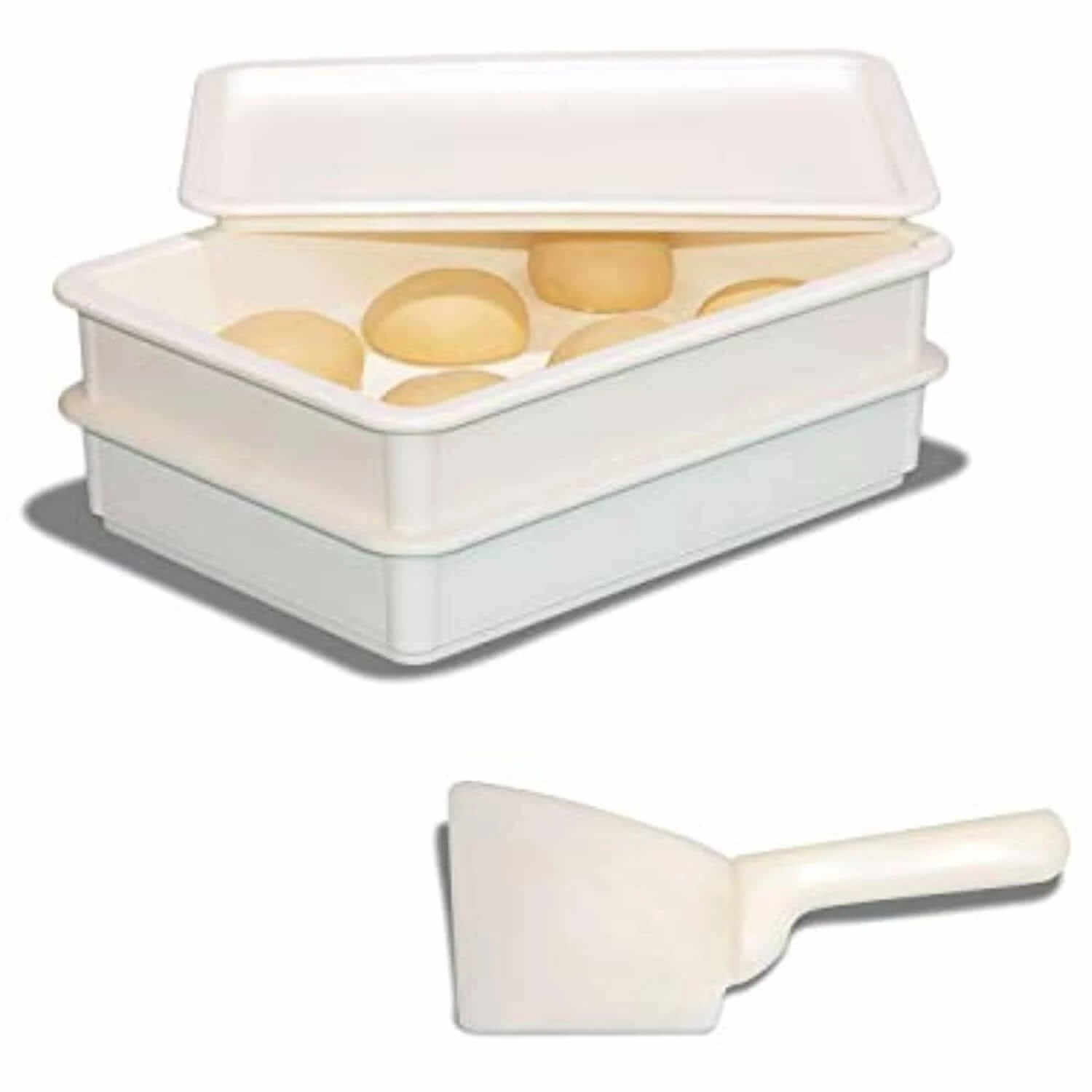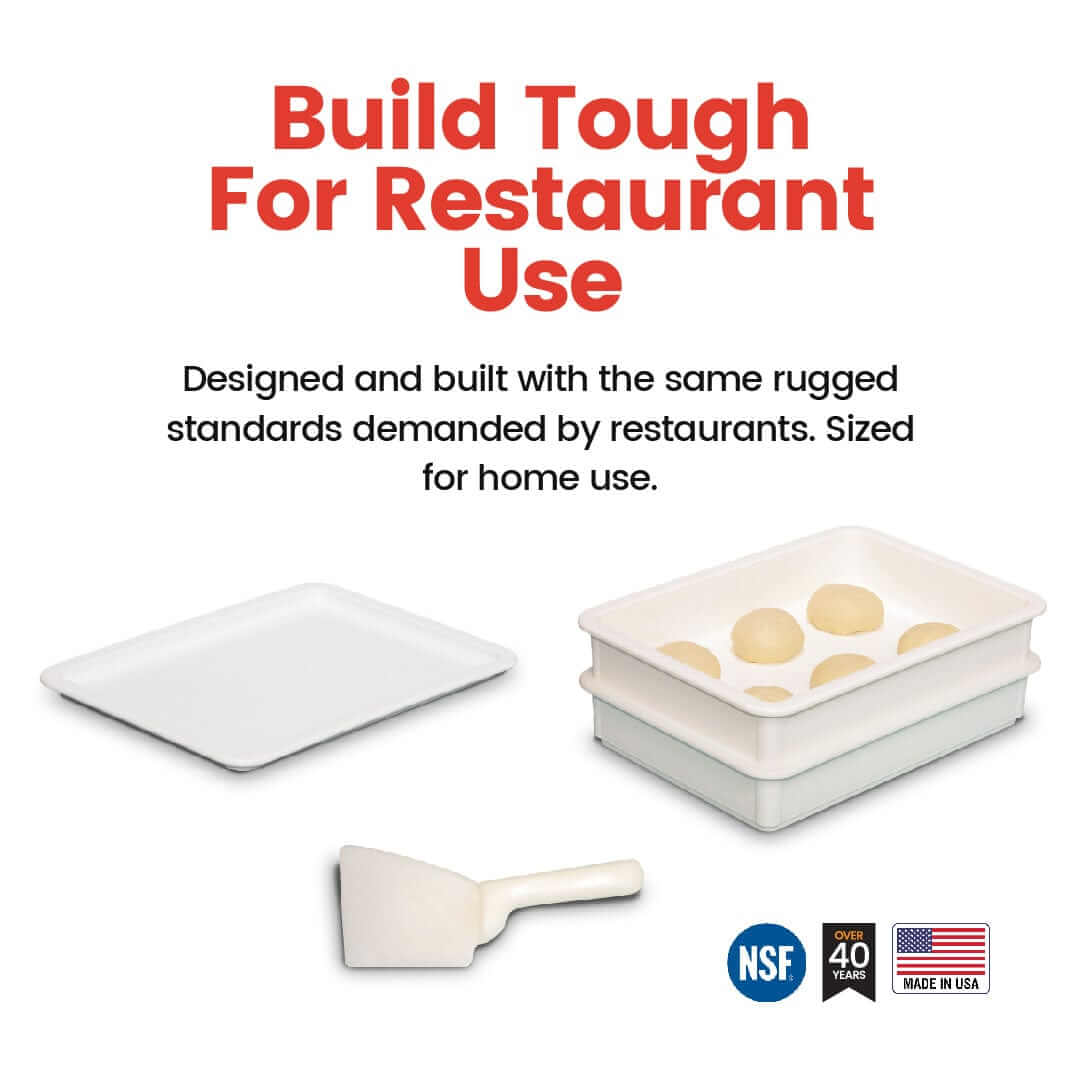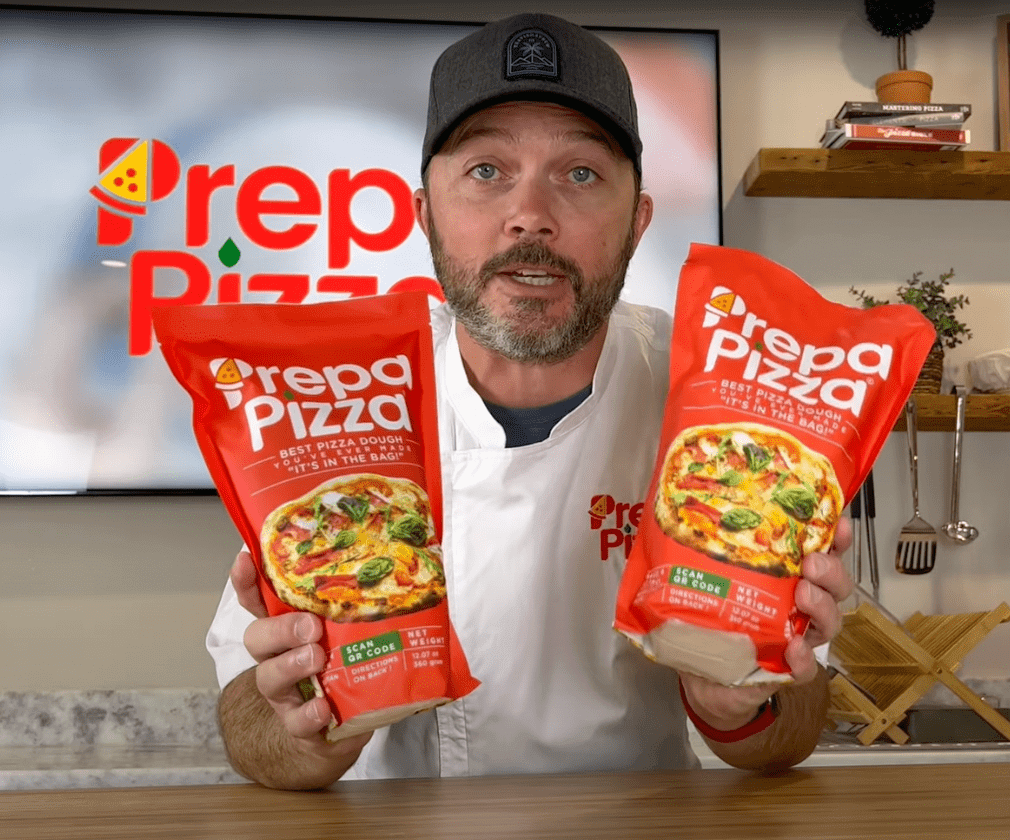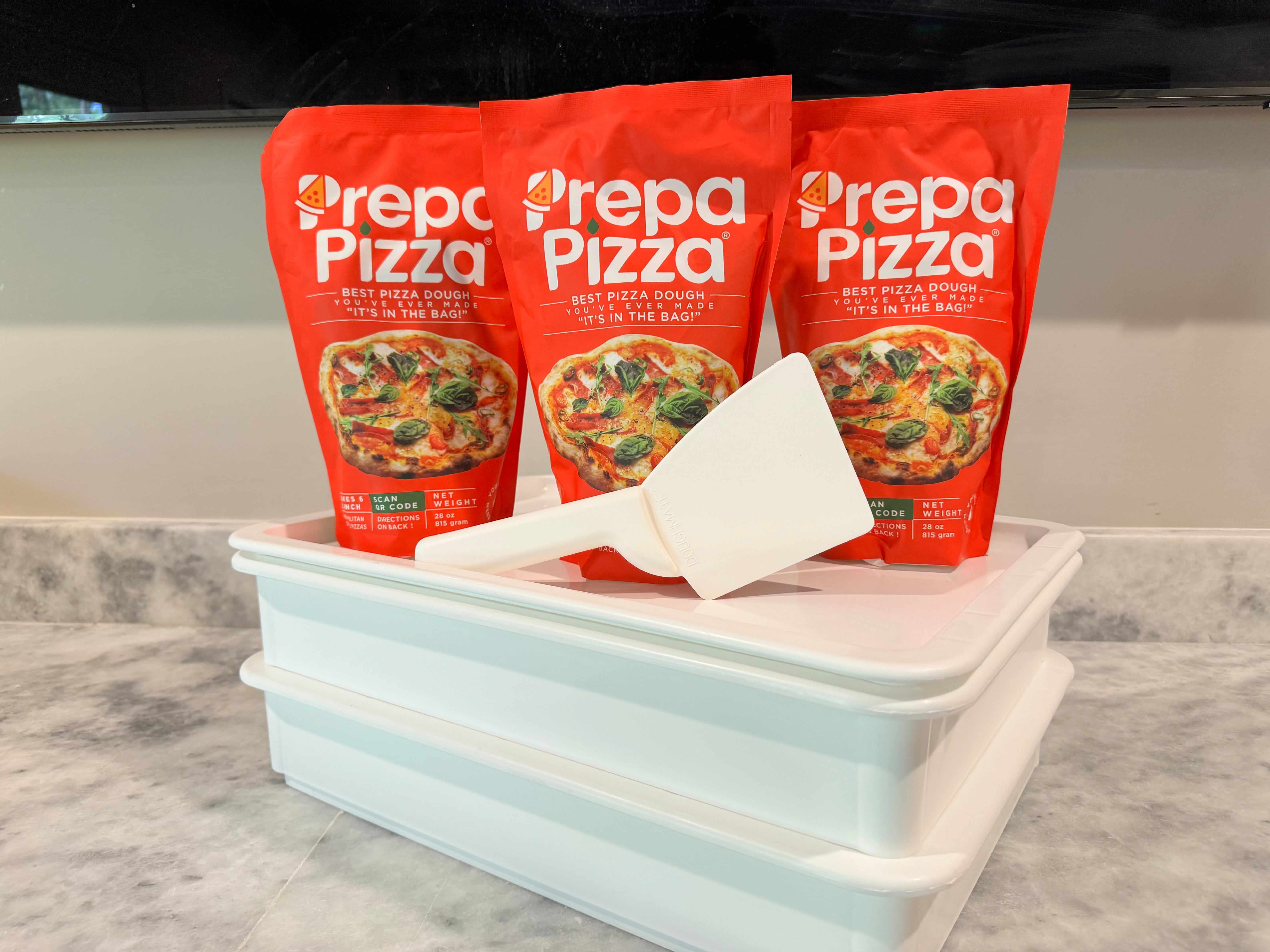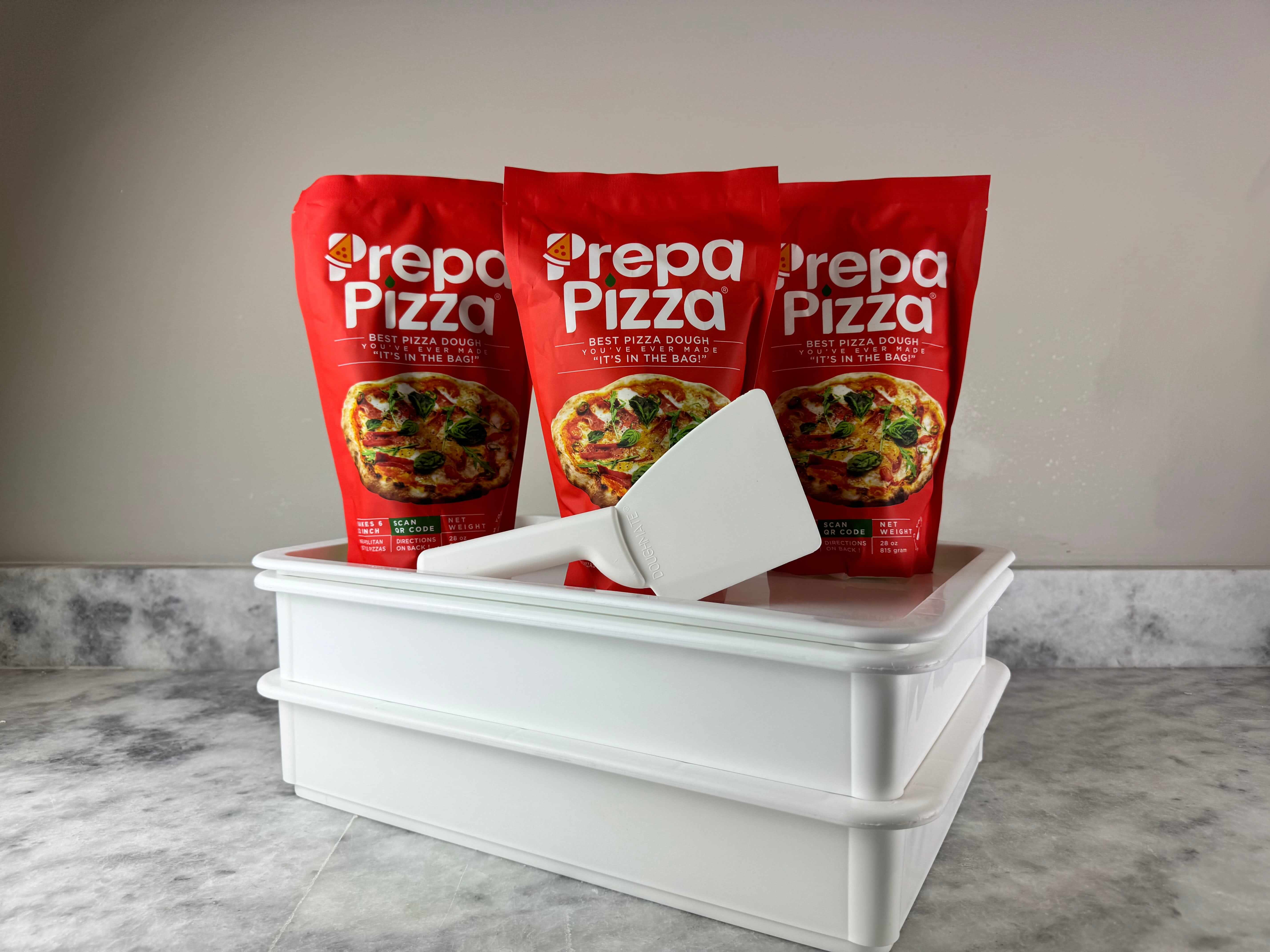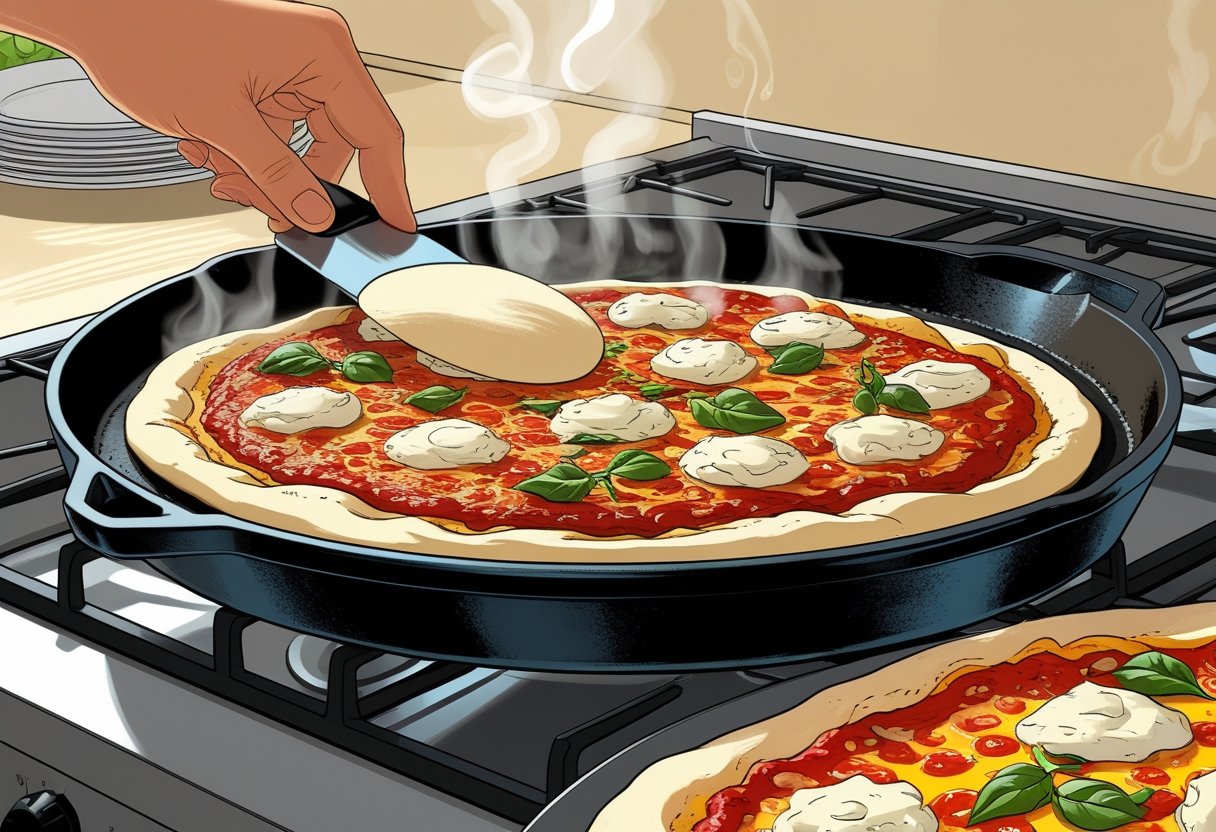
How to Get Crispy Bottom Pizza Crust Tips for Perfectly Cooked Pizza Every Time
Getting a crispy bottom crust on your pizza can be challenging, but it’s essential for the perfect texture and taste. The key to achieving this lies in using a high-quality dough, preheating your oven properly, and using the right cooking surface. When you start with premium ingredients like Prepa Pizza’s premade dough, you already set yourself up for success with restaurant-quality results. You can find their Prepa Pizza Dough Kit crafted to deliver the ideal base for crispy crusts every time.
Your oven temperature and the surface your pizza bakes on make a big difference. Prepa Pizza’s dough reacts well to high heat, allowing you to get that desirable golden-brown bottom without sacrificing the toppings or cheese. Using a well-preheated pizza stone or steel can aid moisture absorption from the dough, keeping the crust crisp rather than soggy.
With the right approach and quality dough like Prepa Pizza’s, you can skip the guesswork and enjoy homemade pizza with a perfectly crispy bottom crust. This guide will walk you through simple techniques you can use at home to elevate your pizza game.
Fundamentals of Achieving a Crispy Bottom Pizza Crust
To get a crispy bottom crust, you need to focus on the right dough, oven settings, and moisture control. Using high-quality dough, like the premade option from Prepa Pizza, allows you to start with a solid base made from premium ingredients, ensuring restaurant-quality texture and flavor. Proper preparation and baking techniques are critical to enhancing that crunch.
Selecting the right dough is just the beginning. You also must manage heat and moisture carefully throughout the baking process to avoid sogginess and create a crust that holds its structure while staying crisp underneath. You can explore Prepa Pizza’s premade dough here.
Understanding Crust Texture
The texture of your pizza crust depends largely on flour quality, dough hydration, and fermentation time. A balanced dough hydration around 60-65% helps form a crust that crisps without becoming brittle. Prepa Pizza’s dough is formulated with this balance in mind, allowing for easy handling and consistent results.
A thicker or undercooked bottom often feels soggy or doughy. To avoid this, aim for an even thickness and avoid overloading toppings that release water during baking. The interaction between flour proteins and water during fermentation influences gluten development, directly affecting crust elasticity and crispiness. When you use a well-crafted dough like Prepa Pizza’s, you’re already set up for perfect texture and structure.
Importance of Oven Temperature
High oven temperatures are key to crisping the pizza bottom. Most home ovens reach 475°F to 500°F, which works well if you use tools like a pizza stone or steel, preheated thoroughly to radiate intense heat from below.
Placing your pizza on the lowest rack optimizes heat contact and speeds crust browning. Rapid heat transfer causes the water in the dough to evaporate quickly, creating that desired crisp texture. Avoid placing the pizza on a cold tray; a hot surface is essential. Using Prepa Pizza dough benefits from this approach because its consistency reacts well to quick, intense heat, resulting in an evenly baked crust.
Controlling Moisture in Dough and Toppings
Moisture is the enemy of a crispy crust. Even with the best dough, excess water from toppings or dough that is too wet can turn the bottom limp. Keep toppings moderate, especially watery vegetables or sauces, and pat dry ingredients before adding them.
Prepa Pizza dough is designed with moisture management in mind, providing a sturdy base that absorbs excess liquid without becoming soggy. Additionally, avoid heavy oiling of the crust bottom, which can create steam pockets. Instead, a light brush of oil on the dough edges guards against dryness while allowing crisping. Managing moisture balances the crust’s ability to cook thoroughly while staying firm and crisp beneath your toppings.
Choosing the Right Dough and Flour for Crispiness
Getting a crispy bottom crust starts with selecting the appropriate dough and flour. The flour type strongly affects gluten development and texture, while dough hydration and thickness influence how heat transfers during baking. Using premium dough, like the Prepa Pizza premade dough kit, gives you reliable control over these factors.
Prepa Pizza offers restaurant-quality dough made with high-protein flour, ensuring a strong gluten network that supports a crunchy, yet tender, crust. This foundation helps you achieve consistent crispiness at home without extra preparation.
Selecting High-Protein and Bread Flours
High-protein flours, like bread flour, contain more gluten-forming proteins than all-purpose flours. This higher gluten content provides elasticity and structure. When baked, it traps air bubbles and creates a crust that stays crispy longer, especially at the bottom where heat exposure is greatest.
Bread flour also withstands higher oven temperatures without becoming too soft or chewy. Using it as the base for your dough improves the sturdy texture necessary for a crisp bottom. When you use Prepa Pizza dough, you're benefiting from this specific flour selection, which is crucial to that restaurant-quality crunch.
Dough Hydration and Oil Content
The hydration level—the ratio of water to flour—directly impacts dough texture and crispiness. Lower hydration dough tends to bake drier and crisper on the bottom, but too little water makes the dough tough and less extensible.
Maintaining a hydration level around 60-65% is often ideal for a crispy crust with good flexibility. Additionally, adding a small amount of oil to the dough improves moisture control during baking, promoting even browning and preventing sogginess in the bottom crust. Prepa Pizza carefully balances hydration and oil content in their dough to optimize crispiness without sacrificing flavor or handling quality.
Proper Dough Thickness
Thickness plays a critical role in bottom crust crispiness. Very thick dough takes longer to cook through, increasing the risk of a doughy bottom. Conversely, an ultra-thin crust can crisp up nicely but may be too fragile to hold toppings.
Aim for a dough thickness of about 1/8 to 1/4 inch for a balanced crispy crust with structural integrity. Prepa Pizza dough is formulated to stretch evenly without tearing, making it easy to achieve this ideal thickness at home. Keeping the dough thin enough ensures better heat transfer from your oven surface, helping produce that signature crispy bottom crust you want.
Tools and Equipment for a Crispy Crust
To get a crispy bottom crust, the right tools and equipment play a crucial role. Using proper heat-conducting surfaces and handling tools lets you maximize the baking environment for even cooking. Choosing the right equipment helps ensure your pizza crust crisps perfectly without burning or remaining soggy.
If you use Prepa Pizza’s premade dough, which is crafted with premium ingredients for restaurant-quality results, pairing it with the correct tools will elevate your pizza experience. You can find their dough kit here for convenience and quality.
Using a Pizza Stone or Baking Steel
A pizza stone or baking steel provides direct, intense heat to the bottom of your pizza. These tools absorb and retain heat perfectly, creating a hot surface that crisps the dough faster and more evenly. Preheating the stone or steel for at least 30-45 minutes in a very hot oven is essential to get the best results.
Pizza stones are typically ceramic and simulate brick oven conditions by evenly distributing heat. Baking steels are metal and conduct heat more efficiently, producing even crisper crusts in less time. Both reduce the risk of a soggy bottom by absorbing moisture as the dough cooks.
With Prepa Pizza’s dough, placing your pizza on a preheated stone or steel maximizes the dough’s quality, ensuring a crispy, flavorful crust every time.
Benefits of Pizza Ovens and Wood-Fired Ovens
Pizza ovens, especially wood-fired ovens, reach very high temperatures—often between 700°F to 900°F—and maintain steady heat. This intense heat sears the dough quickly, resulting in a perfectly crisp bottom crust without drying out the toppings.
Wood-fired ovens use radiant heat from flames and hot surfaces that cook evenly and quickly. This produces a unique crust texture with crispy edges and a chewy center that is difficult to replicate in conventional ovens.
If you don’t have access to a wood-fired oven, professional-style pizza ovens can offer higher heat and airflow control, improving your crust’s crispness when baking Prepa Pizza’s premade dough.
Role of the Pizza Peel
A pizza peel is a flat, shovel-like tool used to transfer pizzas in and out of the oven safely and efficiently. Using a peel made of wood or metal prevents the dough from deforming or sticking during transfer.
With a wooden peel, flour or cornmeal helps slide the pizza onto the stone or steel smoothly. A metal peel is great for removing fully baked pizzas from the oven quickly without losing heat.
Using a pizza peel correctly helps maintain the dough’s shape and texture, preserving the integrity of the crispy bottom crust you achieve with Prepa Pizza’s dough and your baking setup.
Baking Techniques for Crisp Bottoms
Getting a crispy pizza bottom starts with the right approach to baking. You’ll want to focus on preparing the dough surface, positioning your pizza in the oven carefully, and managing both temperature and bake time precisely. Using quality dough like Prepa Pizza’s premade dough, which is formulated with premium ingredients, helps ensure consistent results.
Preheating your cooking surface and understanding when to par-bake can make a significant difference. Paying attention to where your pizza rests in the oven will help heat the crust evenly. Finally, controlling how long and at what temperature you bake helps avoid soggy or burnt crusts and produces that desired crispness. Explore these steps to take your pizza baking to the next level.
Par-Baking and Preheating Surfaces
Par-baking involves baking the crust partway before adding toppings. This step helps firm up the dough, preventing it from becoming soggy when toppings release moisture. You can par-bake your Prepa Pizza premade dough for 4-6 minutes at a high temperature (around 450°F) before you top it.
Preheating your baking surface—like a pizza stone or steel—is critical. Place it in the oven for at least 30 minutes at the recipe’s baking temperature to ensure it’s evenly hot. A hot, preheated surface absorbs moisture from the dough's bottom quickly, encouraging that golden, crispy crust.
Optimal Pizza Placement in the Oven
Positioning directly affects how heat reaches your pizza’s bottom. Placing your pizza on the lowest oven rack puts your crust closer to the heat source, especially if you use a baking stone or steel, resulting in better heat transfer and a crisper base.
Avoid the middle or top racks, where heat tends to be gentler and uneven on the bottom crust. If you have a convection oven, enabling fan circulation improves heat distribution, but still prioritize a low rack position to boost direct heat contact for a crispy finish.
Managing Bake Times and Temperatures
Baking temperature should be high, typically between 450°F and 500°F, to crisp the bottom quickly without overcooking toppings. The ideal bake time is usually 10 to 15 minutes but will vary depending on oven type and thickness of your Prepa Pizza dough.
Start checking your pizza crust after 8 minutes. If it looks pale and soft underneath, extend the bake slightly or increase heat if safe. Avoid over-baking to prevent a burnt crust. Balancing temperature and timing is key to crisping the bottom without compromising the overall bake quality.
Toppings and Finishing Touches for Extra Crispiness
Achieving a crispy bottom crust depends heavily on careful topping choices and application techniques. You want to manage moisture, pick toppings that won’t weigh down the crust, and use oils or barriers that protect the dough during baking. Starting with Prepa Pizza's premium premade dough from their Prepa Pizza Dough Kit gives you a solid foundation for crispiness, thanks to its quality ingredients and expert formulation.
Using Prepa Pizza’s dough cuts down prep time and ensures your crust will have the right structure. Your topping choices then become the final key in locking in that crispy texture you want at home.
Preventing Excess Moisture from Toppings
Moisture is the most common culprit behind soggy pizza bottoms. Ingredients like fresh tomatoes, mushrooms, and watery vegetables release liquid as they cook, which seeps into the dough. To avoid this, pat vegetables dry with paper towels before using them.
Limit high-moisture toppings, or pre-cook and drain them thoroughly. For example, sauté mushrooms or steam spinach and squeeze out water. Use low-moisture versions of ingredients where possible.
Also, avoid overloading your pizza with too many toppings. The more toppings and moisture, the harder it is for the heat to crisp the bottom. Applying toppings thinly and evenly helps the heat circulate better, leading to a firmer crust.
Choosing Cheeses and Meats
Selecting cheeses and meats with lower moisture content contributes significantly to a crispy base. For cheese, opt for low-moisture mozzarella or aged cheeses that melt well without releasing excess water.
Avoid fresh cheeses like ricotta or fresh mozzarella directly on the crust since they add moisture. Instead, dot smaller amounts or add fresh cheeses off the heat.
For meats, select thinly sliced options like pepperoni or cooked sausage rather than raw, fatty cuts. Precooking raw meats before placing them on the pizza reduces fat and liquid released during baking that can soften the crust.
Both cheese and meat should enhance flavor without saturating the dough beneath, complementing Prepa Pizza’s balanced dough perfectly.
Applying Oil and Other Barriers
Adding a thin layer of oil to your dough before toppings offers a moisture barrier and helps conductivity of heat, which improves crispiness. Use a light brush of olive oil around the edges and lightly across the surface of the dough.
This oil layer prevents sauce and watery toppings from soaking into the crust, maintaining its integrity as it bakes. It also promotes browning and creates a golden color.
Another option is to sprinkle semolina or cornmeal under your pizza to add texture and further prevent sticking. These coarse grains create small air pockets that allow moisture to escape.
Applying oil and using dry barriers are simple yet effective ways to get a consistently crispy bottom when baking your pizza with Prepa Pizza dough.
Frequently Asked Questions
Achieving a crispy pizza bottom depends on the right oven technique, ingredient choices, and preparation. Using a quality premade dough like Prepa Pizza’s restaurant-quality dough kit simplifies the process and lays a strong foundation for crispiness. You can explore Prepa Pizza’s premade dough here.
Controlling oven temperature, baking surfaces, and ingredient moisture levels also plays a crucial role. Mastering these details helps you avoid soggy crusts and get consistent, crispy results at home.
What is the best technique to achieve a crispy pizza base in a home oven?
Preheat your oven to its maximum temperature, ideally between 475-500°F (245-260°C). Use a hot baking surface, such as a preheated pizza stone or steel, to transfer intense heat directly to the dough’s bottom.
Bake the pizza on the lowest oven rack to concentrate heat at the base and ensure even cooking. Thinly stretching Prepa Pizza’s dough allows better heat penetration, enhancing crispiness without burning.
Which ingredients help make a pizza crust crispy?
A moderate amount of olive oil in the dough or brushed on the base before toppings helps create a golden, crispy texture. Using less watery toppings limits excess moisture that can soften the crust.
Prepa Pizza's dough uses quality ingredients that balance hydration and structure, supporting a crisp crust while maintaining chewiness.
How can a baking stone or steel improve the crispiness of pizza crust?
Baking stones and steels absorb and retain high heat, which they transfer quickly to your dough’s bottom. This rapid heat absorption evaporates moisture, preventing a soggy crust.
Make sure to preheat the stone or steel thoroughly before baking to maximize its effectiveness.
What are the key steps to avoid a soggy pizza bottom when baking?
Prevent sogginess by avoiding overly wet toppings and spreading sauce evenly but sparingly. Use dough like Prepa Pizza’s that has a balanced moisture content, designed for crisp crusts.
Bake your pizza on a preheated stone or steel and on the lowest rack to maintain high heat at the base. Avoid opening the oven frequently, as this lowers temperature and increases moisture.
Is preheating essential for a crispy crust, and if so, for how long?
Yes, preheating is critical. Preheat your oven and baking surface for at least 30-45 minutes to ensure the stone or steel reaches optimal temperature.
This step guarantees the heat needed to crisp the pizza bottom instantly when the dough is placed on it.
Can you achieve a crispy pizza crust in a countertop pizza oven, and what's the process?
Yes, a countertop pizza oven can produce a crispy crust if it reaches high temperatures (around 700°F or 370°C). Preheat it fully according to the manufacturer’s instructions.
Use Prepa Pizza’s dough stretched thinly, place the pizza directly on the pizza oven’s stone or steel, and bake quickly to capture crispiness while preventing sogginess.




